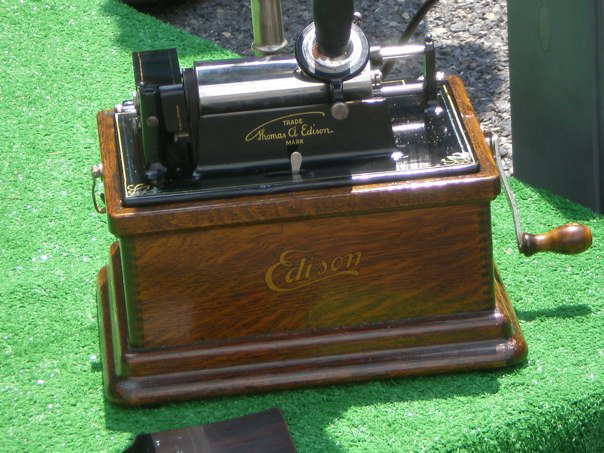Where Would We Be Without Music Or Ways To Record It?
Whether listening to Scott Joplin, Bolero, Pink, or Louis Armstrong—or all of them—where would we be without music and without the ability to record and re-play music for our pleasure?
A recent article in the New York Times announced that a fantastic collection of historical jazz recordings has been acquired from the estate of William Savory. “The National Jazz Museum in Harlem acquired the entire set of nearly 1,000 discs, made at the height of the swing era, and has begun digitizing recordings of inspired performances by Louis Armstrong, Benny Goodman, Billie Holiday… and others that had been thought to be lost forever.” According to the article, some of the recordings were made by Savory on aluminum disks or even acetate. This is a far cry from the wax cylinders invented by Thomas Edison in the last quarter of the nineteenth-century.
A few years ago, Matt Musselman and his band, Grandpa Musselman and His Syncopators, were asked by the Thomas Edison National Historic Park, New Jersey, to perform some ragtime music to celebrate Thomas Edison Day.
 Grandpa Musselman and His Syncopators
Grandpa Musselman and His Syncopators
at the Thomas Edison National Historic Park
The event was to recreate what happens during the recording of music on wax cylinders and to save the performance for posterity in a historical format.

Wax cylinders waiting to for the performance to begin.
Grandpa Musselman and His Syncopators rocked out some of Scott Joplin’s ragtime compositions.
As the Syncopators performed, Musselman’s music was captured on yellow paraffin wax cylinders, exactly as it would have been done from about 1880-1915.
 Historic Edison equipment for recording
Historic Edison equipment for recording
The sound is transferred by a stylus into the soft wax. The scratchy, “dusty” sounds we hear in old recordings, are said to be in part some of the wax filings that collect in the cylinder. Ideally, while the music is being performed and inscribed in the cylinder, an assistant blows the shavings away to eliminate the background noise.
 Thomas Edison staff removing wax shavings
Thomas Edison staff removing wax shavings
And, luckily for Musselman the Edison National Historic Site has promised to take the wax recording of his music, and give him back a digitized version. Grandpa Musselman and His Syncopators frequently performed in New York and have included tours to Dubai, Scandinavia—and the Thomas Edison National Historic Park—in their schedule.
Where would we be without the musicians and composers AND the scientists and inventors like Edison who found ways to preserve the music! (See also Wikipedia for info on wax cylinders.)

Matt Musselman with ear to the recording horn
Note: Grandpa Musselman and His Syncopators are no longer performing as a band. We still encourage you to listen frequently to your favorite music and celebrate the inventions of those visionaries who made it possible for us to record and preserve the sounds we call music.
Quotation from Larry Rohter, “Storied Trove of 1930s Jazz Is Acquired by Museum.” New York Times, ARTS. 16 Aug 2010.
Did you like this information? All of my blog posts start as an e-letter and my next e-letter is due out soon. Don't miss out!








Send a message or leave a comment